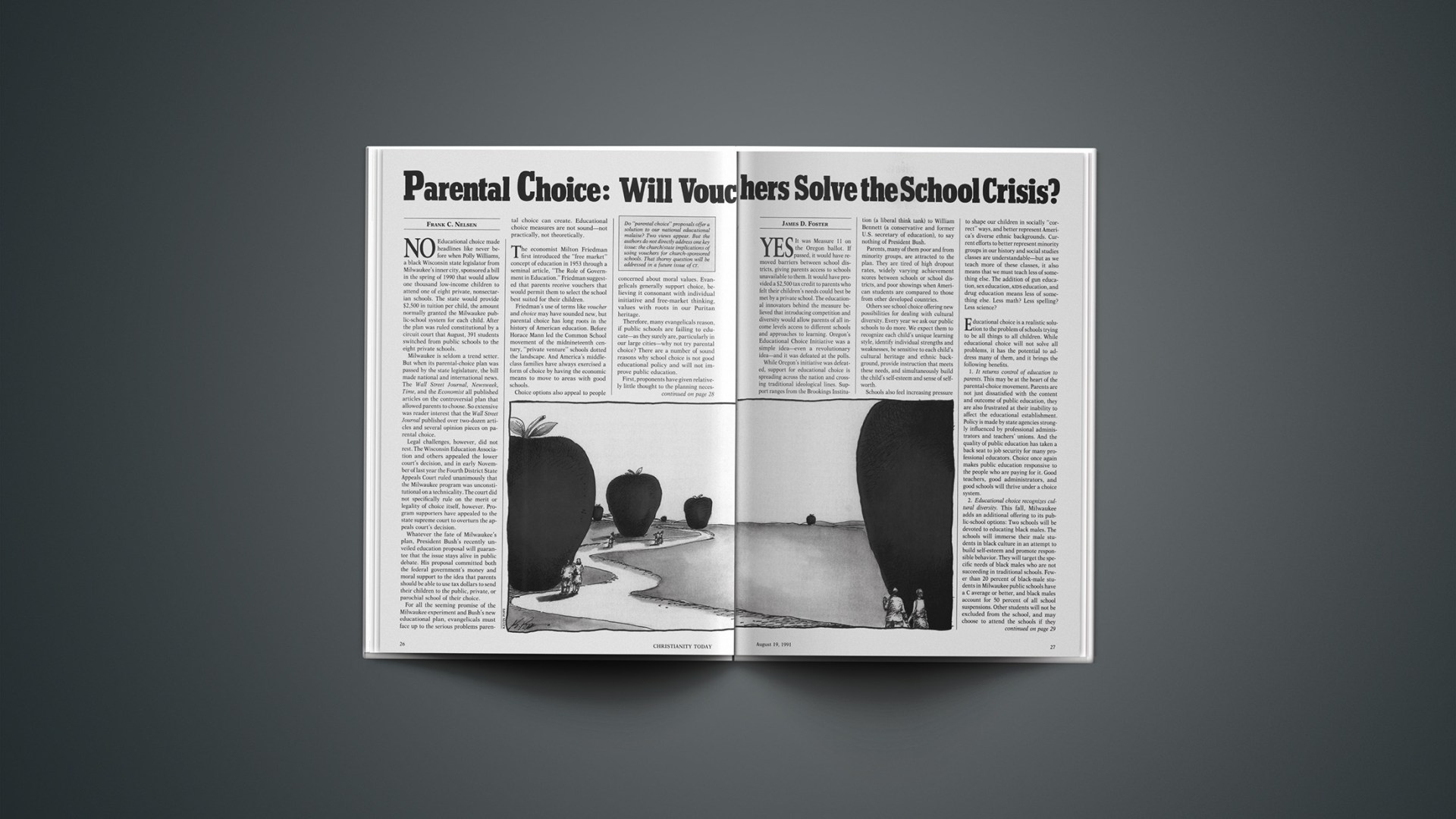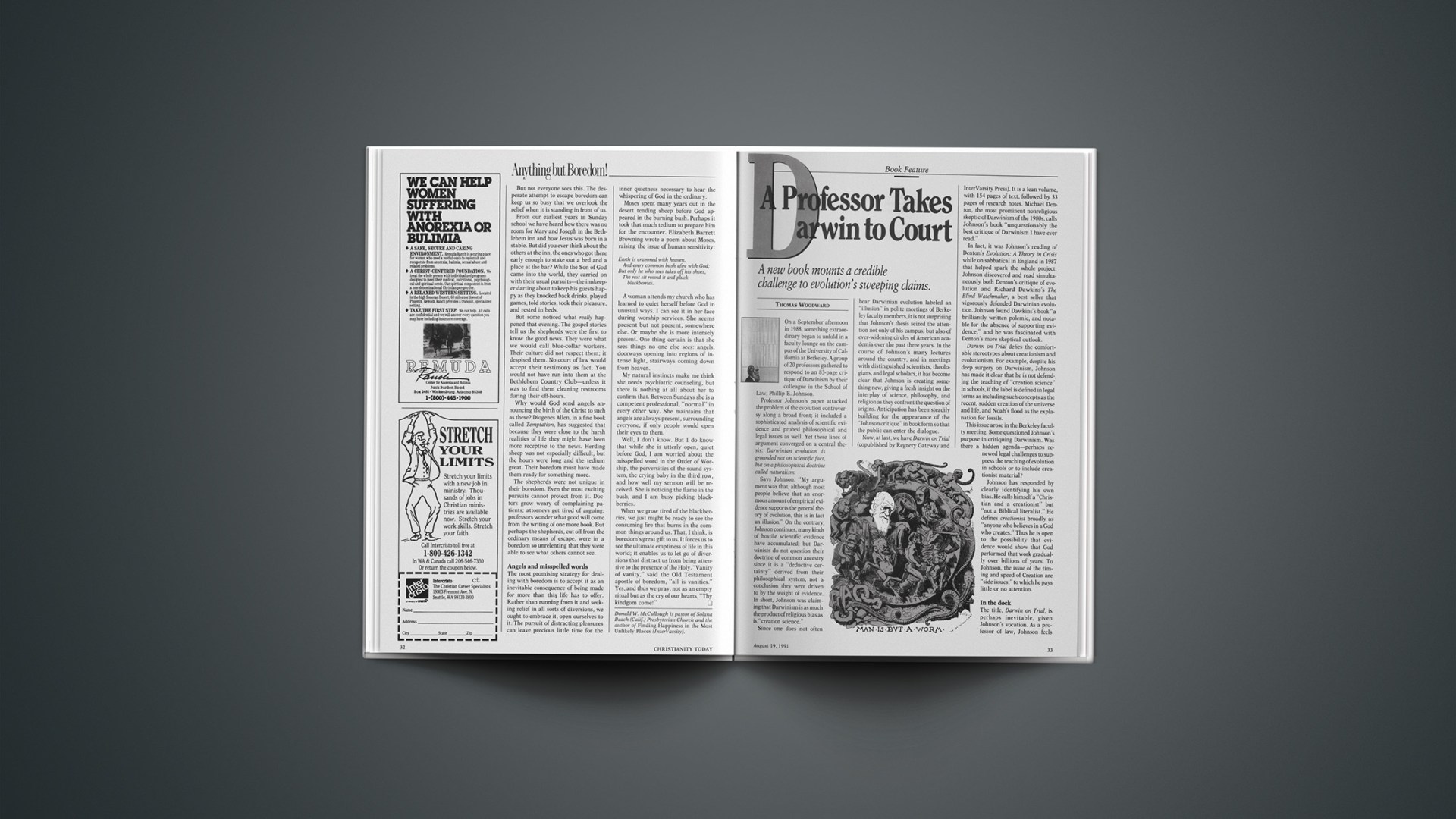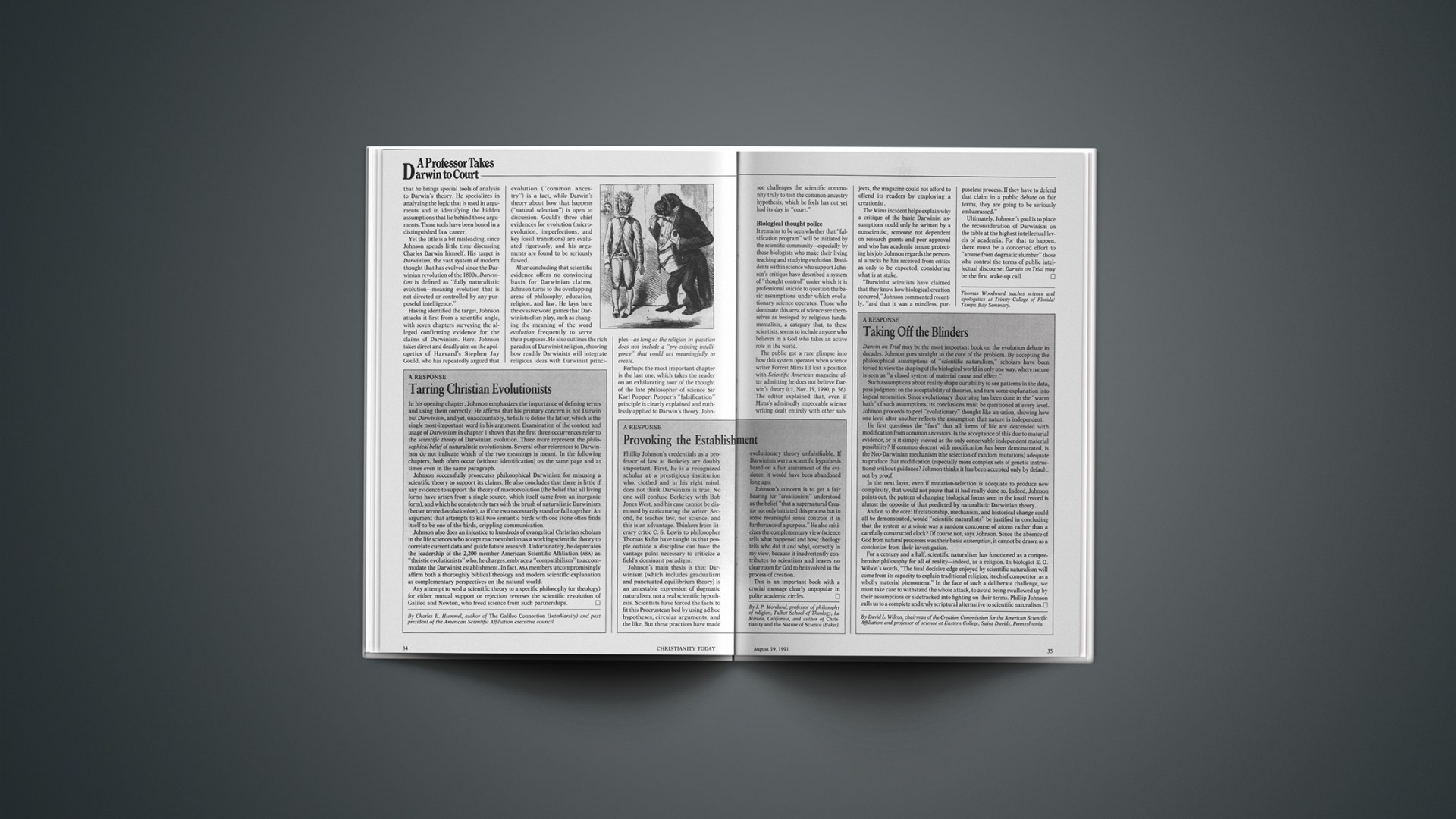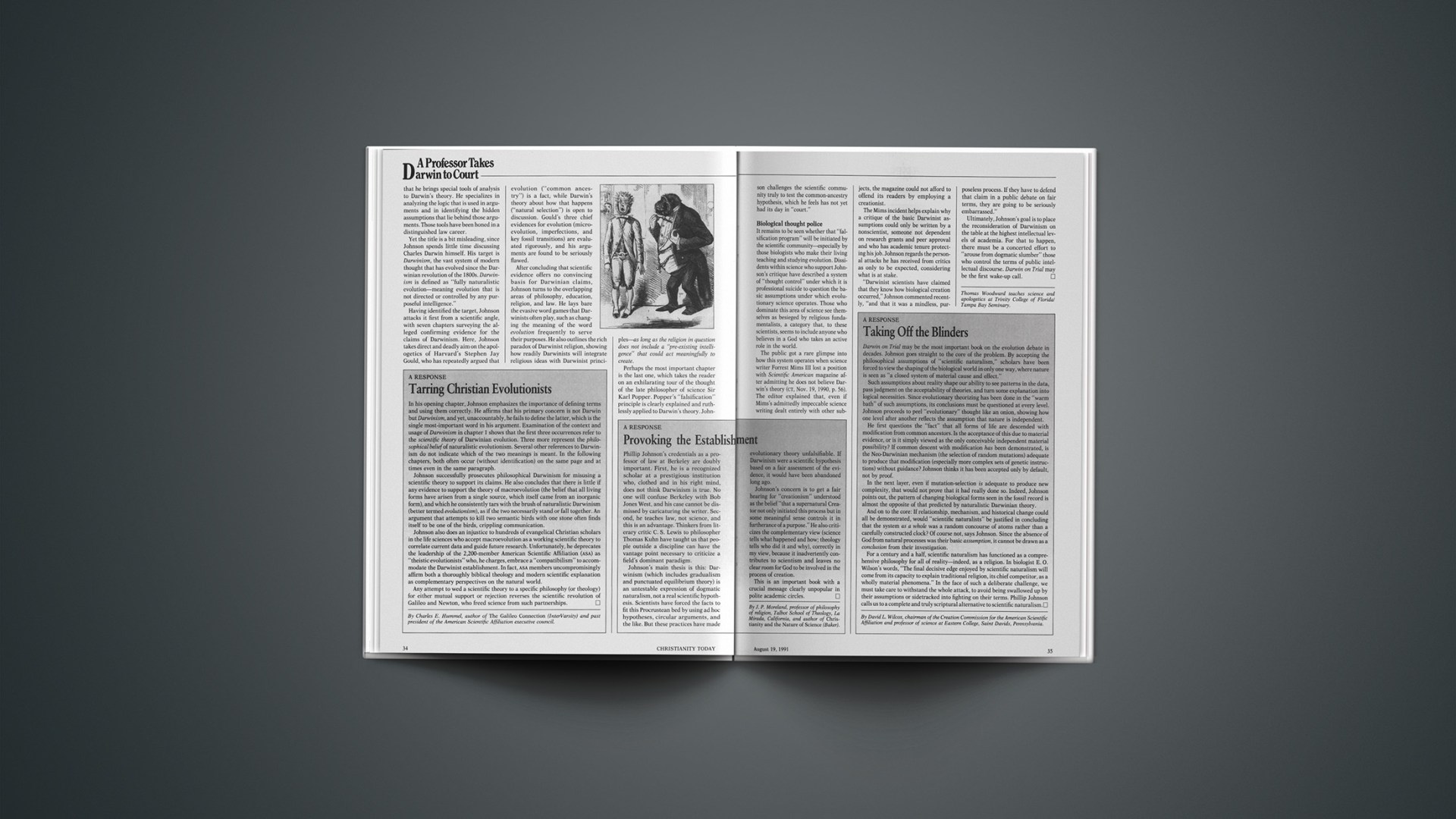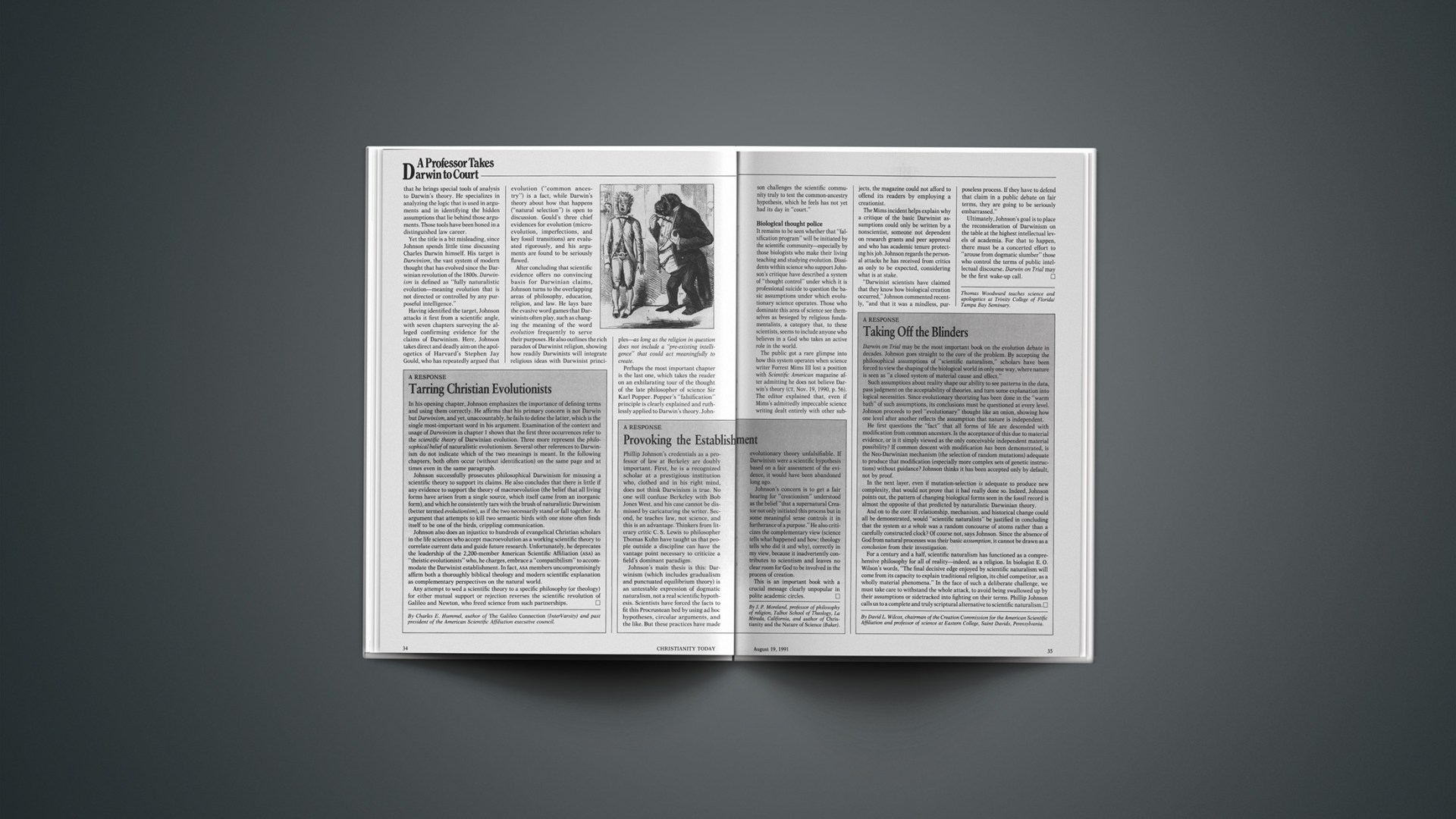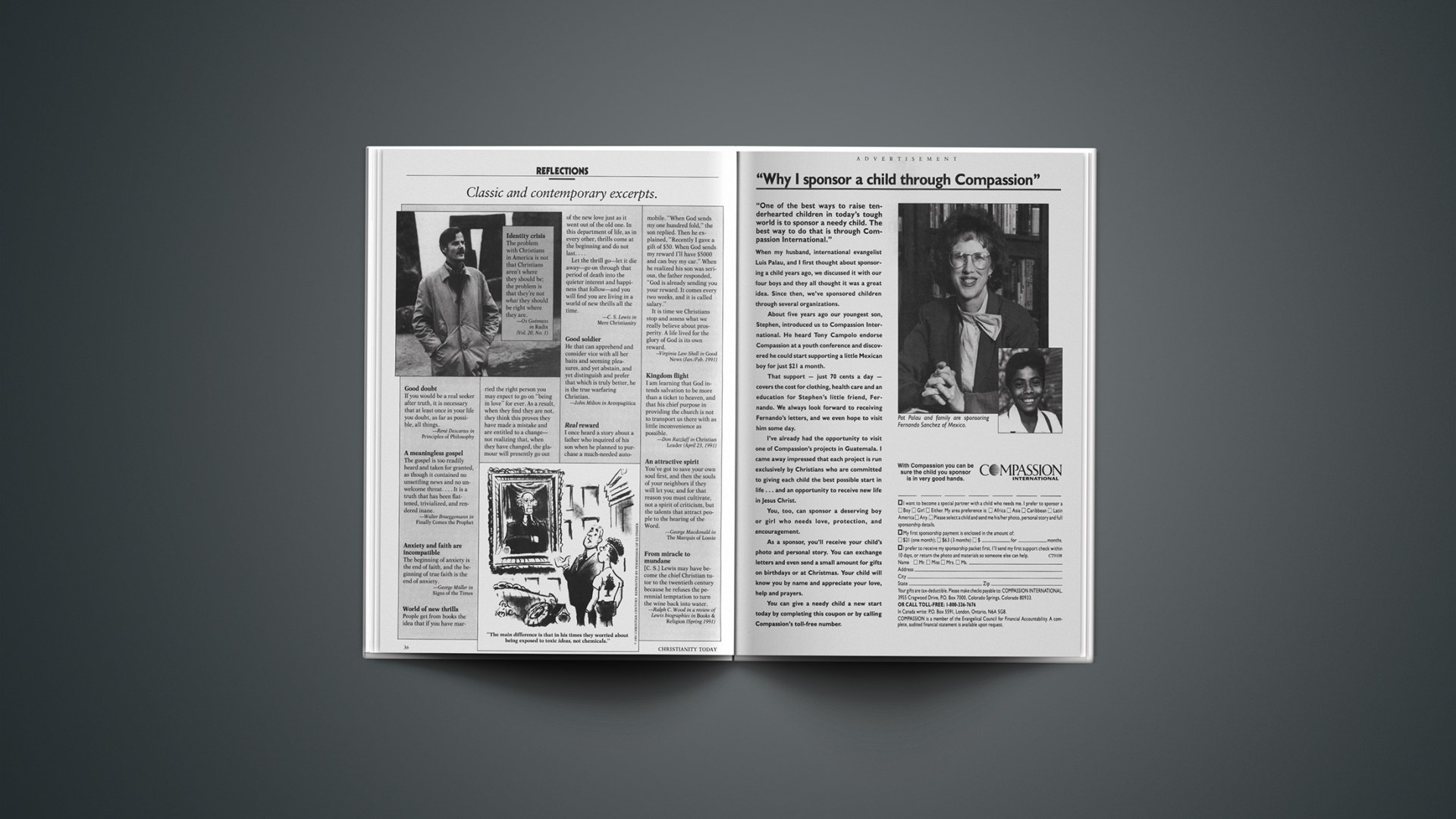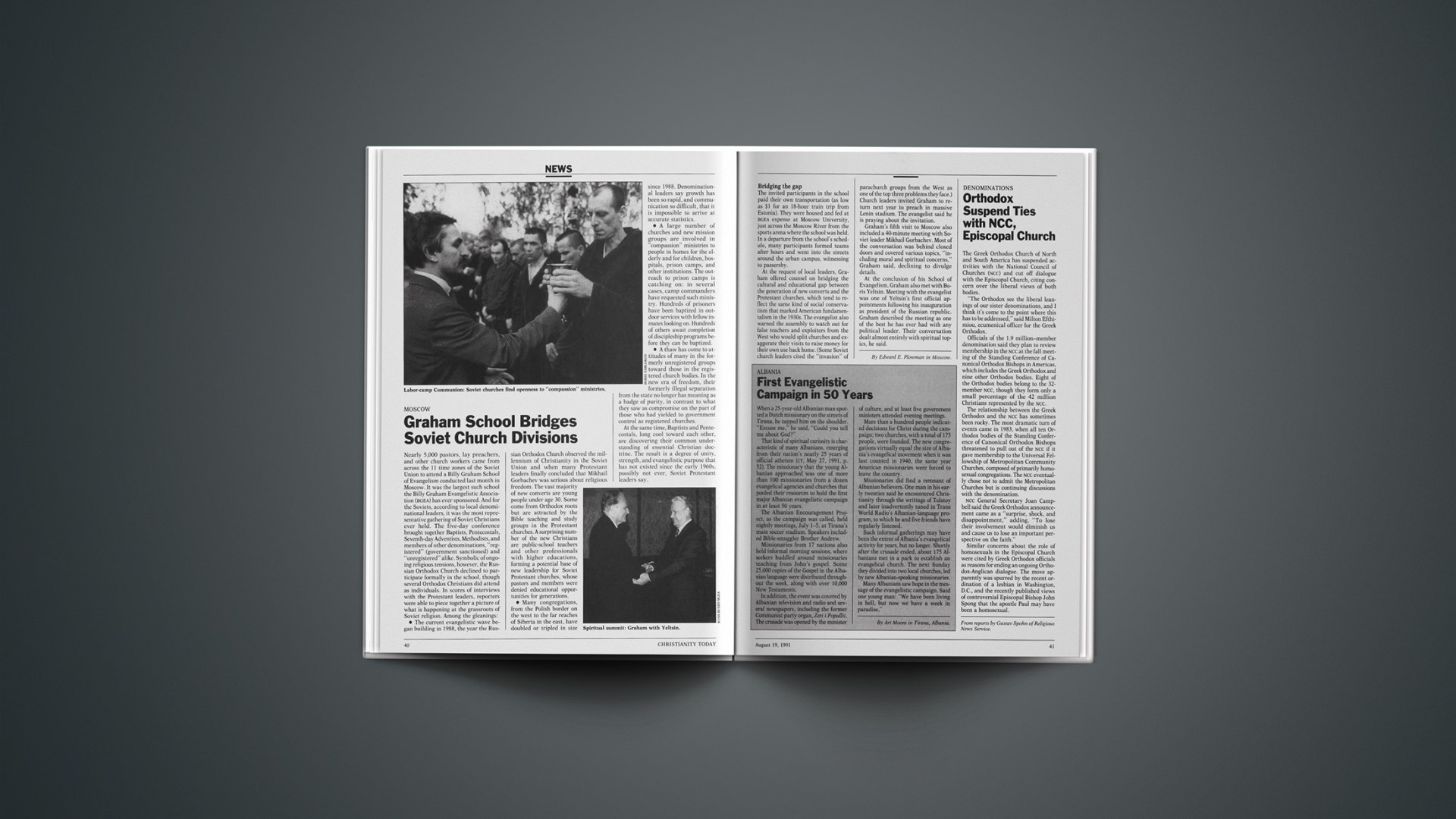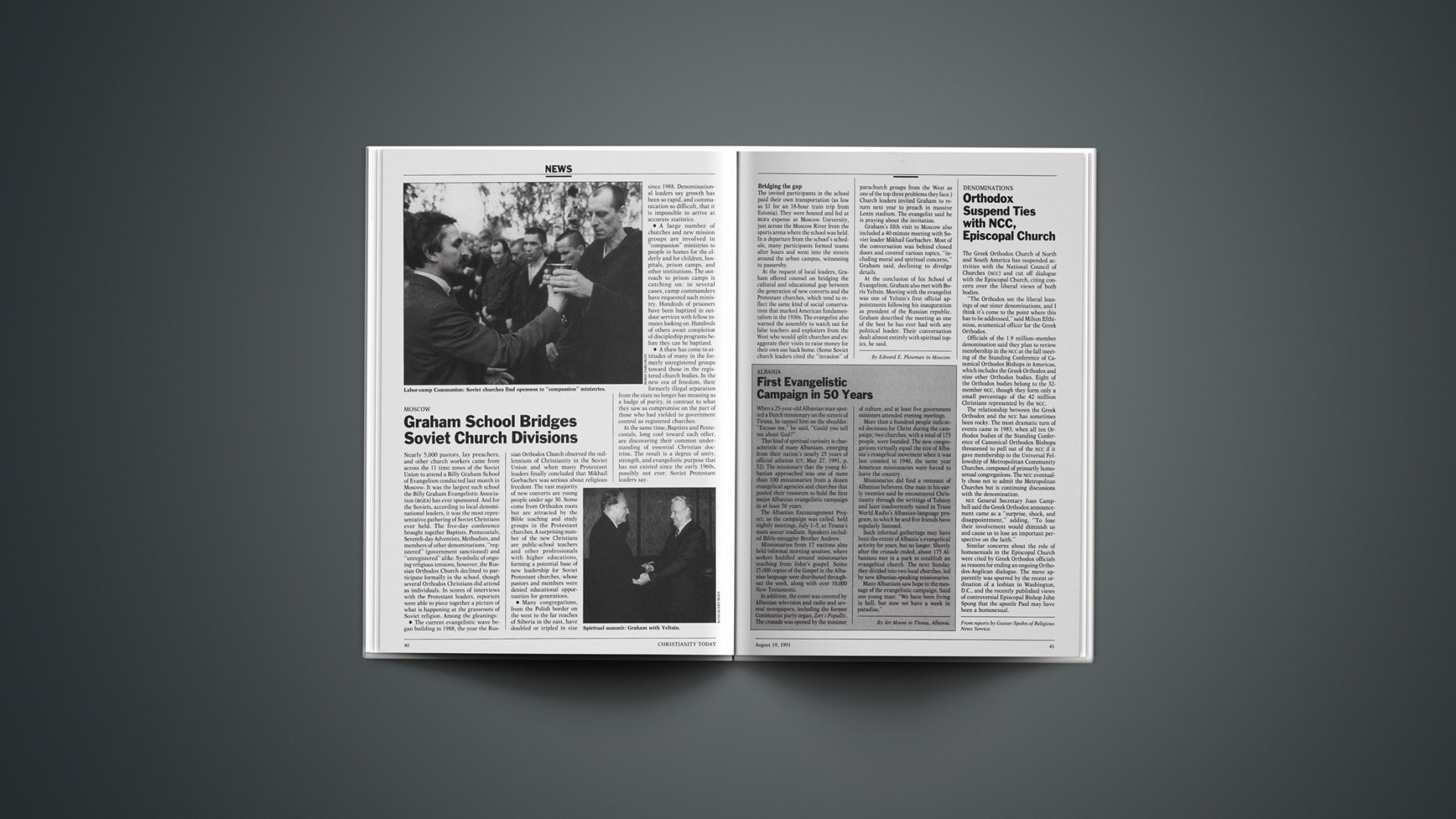NO Educational choice made headlines like never before when Polly Williams, a black Wisconsin state legislator from Milwaukee’s inner city, sponsored a bill in the spring of 1990 that would allow one thousand low-income children to attend one of eight private, nonsectarian schools. The state would provide $2,500 in tuition per child, the amount normally granted the Milwaukee public-school system for each child. After the plan was ruled constitutional by a circuit court that August, 391 students switched from public schools to the eight private schools.
Milwaukee is seldom a trend setter. But when its parental-choice plan was passed by the state legislature, the bill made national and international news. The Wall Street Journal, Newsweek, Time, and the Economist all published articles on the controversial plan that allowed parents to choose. So extensive was reader interest that the Wall Street Journal published over two-dozen articles and several opinion pieces on parental choice.
Legal challenges, however, did not rest. The Wisconsin Education Association and others appealed the lower court’s decision, and in early November of last year the Fourth District State Appeals Court ruled unanimously that the Milwaukee program was unconstitutional on a technicality. The court did not specifically rule on the merit or legality of choice itself, however. Program supporters have appealed to the state supreme court to overturn the appeals court’s decision.
Whatever the fate of Milwaukee’s plan, President Bush’s recently unveiled education proposal will guarantee that the issue stays alive in public debate. His proposal committed both the federal government’s money and moral support to the idea that parents should be able to use tax dollars to send their children to the public, private, or parochial school of their choice.
For all the seeming promise of the Milwaukee experiment and Bush’s new educational plan, evangelicals must face up to the serious problems parental choice can create. Educational choice measures are not sound—not practically, not theoretically.
The economist Milton Friedman first introduced the “free market” concept of education in 1953 through a seminal article, “The Role of Government in Education.” Friedman suggested that parents receive vouchers that would permit them to select the school best suited for their children.
Friedman’s use of terms like voucher and choice may have sounded new, but parental choice has long roots in the history of American education. Before Horace Mann led the Common School movement of the midnineteenth century, “private venture” schools dotted the landscape. And America’s middle-class families have always exercised a form of choice by having the economic means to move to areas with good schools.
Choice options also appeal to people concerned about moral values. Evangelicals generally support choice, believing it consonant with individual initiative and free-market thinking, values with roots in our Puritan heritage.
Therefore, many evangelicals reason, if public schools are failing to educate—as they surely are, particularly in our large cities—why not try parental choice? There are a number of sound reasons why school choice is not good educational policy and will not improve public education.
First, proponents have given relatively little thought to the planning necessary for choice plans to succeed. Take facilities. Of the estimated 46 million students enrolled in elementary and secondary schools in the fall of 1989, about 12 percent were in private schools. The cost of building and equipping high-quality private schools for the remainder would be enormous. If the $4,000 to $5,000 now granted to local school districts for the education of a student were given to private schools, it would be insufficient to construct facilities.
Nor would the inadequate funds allow for smooth transition, which is the second problem. The chaos and instability that would result during a transition period could produce serious psychological and social problems for children.
A third problem has to do with the unwarranted claims for the values of competition. In their recent book, Politics, Markets, and America’s Schools, John Chubb and Terry Moe of the Brookings Institution conclude that competition would improve education as it has improved the quality of consumer goods of other types. But is education a commodity to be sold like detergent, shoes, or cars?
The best schools will enroll the most students and make the most money, the argument runs. With added resources, these competitive schools will generate all the funds they need. The result, say choice advocates, is that public schools will have to improve.
But this kind of economic thinking fails to take into account the type of student who studies to become a teacher. I have found that students going into teaching today have lost much of the idealism of 20 years ago. They are much less tolerant of minorities; this is especially true of students from blue-collar backgrounds who feel they miss out on the breaks and educational funding received by racial minorities. Although education students have rarely thought through the implications of their beliefs, they generally hold to a relativism that downplays commitment to moral and religious values.
The free-market approach to education is based on the notion that competition will make schools better, that in the heat of the race for higher salaries and better positions, teaching will improve. But what the advocates of choice fail to understand is that teachers are not really motivated by money, or at least the kind of money that can be made in the private economic sector. About half of the students in my Introduction to Teaching classes are dropouts—from schools of business or jobs in business. They tell me the reason for leaving business is because they dislike the competitive environment. Clearly, these are not people who will make educational competition work.
Furthermore, current education classes often leave future teachers with a distaste for academic testing and tracking. They train students to teach with what is called “cooperative learning.” Education professors who do not know much about John Dewey’s philosophy still follow Dewey’s stress on cooperation rather than competition.
Perhaps choice advocates have another source from which to get teachers for “market-driven” schools, but they have not told us where these teachers will come from. Bright, young people motivated by money alone will not last long in teaching. The task demands hard work, especially in tough, inner-city schools.
A fourth problem concerns the needs of ethnic minorities. Will parental-choice schools help black children? These children need teachers of their own race as role models, yet there is an acute shortage of black teachers, a shortage that will only get worse. In 1990, the School of Education at the University of Wisconsin-Milwaukee graduated, out of a class of 149, one black male student and two black females. More blacks went into teaching 15 years ago. The situation in Milwaukee is by no means unique; it exists across the country. If anything, private schools tend to show less interest in the needs of minorities, not more.
Fifth, school-choice advocates have failed to address what they intend to do with children and youth who are difficult to teach. They seem to forget that private-school teachers and administrators evidence little interest in the aggressive black-male student, the cocaine, AIDS, or handicapped child, or children from troubled homes. Choice schools will want to admit the best and the brightest, the outstanding athletes—the kind of students that will make these schools successful. Although the advocates of choice will never admit it, choice has an air of Social Darwinism about it.
Choice as an educational alternative will have run its course—as most innovations in American education do—in a decade or so. American public education in the early decades of the twenty-first century will be forced to take firm action to improve the system. Whether as a nation we can arrive at a consensus on how to save our schools remains to be seen, especially in a society so enamored with “diversity” and “multiculturalism.” Interestingly, it was Milton Friedman’s fear in the early 1950s that vouchers might create schools so diverse that some of them might not teach a common set of values so essential in a democracy.
But I have always been impressed with the great educators of the past who resisted the temptation to put skill development and the acquisition of knowledge first, as we do today. John Locke said that “right living,” “wisdom,” and “civility” all must come before “book learning.” For American society to survive, there must come a renewed societal commitment to the importance of character development and time-tested values in our public schools. That can happen only if we make public schools a high priority.
Recently, juries have found “artistic value” in pornographic museum art exhibits and obscene rap music protected by the First Amendment. This is deeply disturbing to many evangelicals. As important as it is to oppose what is clearly degrading, the principal battleground is still in the nation’s public schools, where the struggle goes on for the minds and hearts of Americans.
Christians are the salt and light of the world (Matt. 5:12–14). Their arena of witness must include the halls of public education. Evangelicals should stop chasing choice. We should instead use every means possible to influence public education in a direction that is in the best interest of all Americans.
YES It was Measure 11 on the Oregon ballot. If passed, it would have removed barriers between school districts, giving parents access to schools unavailable to them. It would have provided a $2,500 tax credit to parents who felt their children’s needs could best be met by a private school. The educational innovators behind the measure believed that introducing competition and diversity would allow parents of all income levels access to different schools and approaches to learning. Oregon’s Educational Choice Initiative was a simple idea—even a revolutionary idea—and it was defeated at the polls.
While Oregon’s initiative was defeated, support for educational choice is spreading across the nation and crossing traditional ideological lines. Support ranges from the Brookings Institution (a liberal think tank) to William Bennett (a conservative and former U.S. secretary of education), to say nothing of President Bush.
Parents, many of them poor and from minority groups, are attracted to the plan. They are tired of high dropout rates, widely varying achievement scores between schools or school districts, and poor showings when American students are compared to those from other developed countries.
Others see school choice offering new possibilities for dealing with cultural diversity. Every year we ask our public schools to do more. We expect them to recognize each child’s unique learning style, identify individual strengths and weaknesses, be sensitive to each child’s cultural heritage and ethnic background, provide instruction that meets these needs, and simultaneously build the child’s self-esteem and sense of self-worth.
Schools also feel increasing pressure to shape our children in socially “correct” ways, and better represent America’s diverse ethnic backgrounds. Current efforts to better represent minority groups in our history and social studies classes are understandable—but as we teach more of these classes, it also means that we must teach less of something else. The addition of gun education, sex education, AIDS education, and drug education means less of something else. Less math? Less spelling? Less science?
Educational choice is a realistic solution to the problem of schools trying to be all things to all children. While educational choice will not solve all problems, it has the potential to address many of them, and it brings the following benefits.
1. It returns control of education to parents. This may be at the heart of the parental-choice movement. Parents are not just dissatisfied with the content and outcome of public education, they are also frustrated at their inability to affect the educational establishment. Policy is made by state agencies strongly influenced by professional administrators and teachers’ unions. And the quality of public education has taken a back seat to job security for many professional educators. Choice once again makes public education responsive to the people who are paying for it. Good teachers, good administrators, and good schools will thrive under a choice system.
2. Educational choice recognizes cultural diversity. This fall, Milwaukee adds an additional offering to its public-school options: Two schools will be devoted to educating black males. The schools will immerse their male students in black culture in an attempt to build self-esteem and promote responsible behavior. They will target the specific needs of black males who are not succeeding in traditional schools. Fewer than 20 percent of black-male students in Milwaukee public schools have a C average or better, and black males account for 50 percent of all school suspensions. Other students will not be excluded from the school, and may choose to attend the schools if they wish; but the curriculum will be designed to make school more relevant to black males. It may or may not work, but it is an effort that must be applauded. Meeting the needs of all our students is what educational choice is all about.
3. Educational choice respects value differences. Christians have long been sensitive to the beliefs and values conveyed through public education. Concern about the way schools handle Creation and evolution, abortion, sex education, and secular values leads some Christian parents to place their children in private schools, even though they must shoulder the financial burden. And value conflicts are not limited to Christian parents. Educational choice supports the right of all parents to pass their values on to their children.
4. Educational choice takes the pressure off of schools to be all things to all people. Principals and other administrators spend much time dealing with parents and community organizations unhappy with the content of the curriculum. Why the theory of evolution and not Creation? Why are certain books in the school library? A choice approach that makes private schools more feasible options takes the pressure off of the public schools; parents who have concerns find it financially acceptable to make the move to a private school. The schools become less of an ideological battleground.
5. Educational choice is cost-effective. Choice programs are typically described as “draining the resources of the public-school system.” But the figures do not bear that out. Oregon, for example, spends over $4,700 on each public-school pupil (making the state thirteenth in the nation). An elementary school enrolling 500 students would receive over $2.3 million. If 10 percent of the students at the school took advantage of a $2,500 tax credit to attend a private school, the school would lose $125,000. But each departing student would leave behind $2,200. That money could then be used to improve the education of the students remaining in the public schools.
Only in the event of wholesale flight from the public schools would a choice plan significantly drain the schools’ resources. Such flight is unlikely, however, and, if it did occur, would that not tell us something? If students flock to certain schools, could we not learn from those schools?
6. Educational choice actually lowers the cost of education. The Oregon system would have allowed a $2,500 tax credit to parents who chose to send their child to a private school. The Milwaukee plan would send a $2,500 voucher with a student to a private school. Wisconsin spends about the same as Oregon does per pupil for education. If the states can purchase an education that is comparable or better for their children at half the cost, why not? Many states, including Oregon, have been doing the same thing at the college level for years.
7. Educational choice could improve the quality of education. One reason poor and minority parents are becoming interested in educational choice is dissatisfaction with the education their children receive. Private schools generally have more academic success than public schools. A voucher system makes these schooling options more accessible to families from all income levels and encourages public schools to improve.
School choice promises to return control of children’s education to the parents, a prospect attractive to many.
8. Voucher systems allow parents to fit the school to the learning style of their child. All schools cannot be all things to all children. Some children are reflective, contemplative, and develop best in a slower-paced atmosphere. Other children flourish in a fast-paced program. An educational-choice system has the potential to allow both types of children to have their specific needs met.
Similarly, parents differ in their preferences for their children. Some parents prefer a structured environment where there are clear rules and expectations and the children learn self-control and discipline. Other parents prefer an atmosphere where children are free to express themselves and develop their creativity. Educational choice allows the parents to match their parenting style with the school atmosphere of their choice.
But don’t choice options favor the well-to-do? Milwaukee addressed the concern by limiting the voucher option to those making less than $22,180 per year. Concern that the $2,500 would not be sufficient to cover the tuition, thereby leaving out poor parents, was addressed by specifying that the private school could not charge more than that amount (six private schools signed up to participate). The concern that choice schools would be elitist and select only the best and the brightest was addressed by requiring random selection when space was available. The Milwaukee plan was supported by the poor and urban minorities, yet the opposition continues to fight such plans.
The make-up of the opposition to the Milwaukee plan illustrates the first obstacle to educational choice. It includes the Wisconsin Education Association Council, the Wisconsin Federation of Teachers (the state’s largest teachers’ union), the Administrators and Supervisors Council of Milwaukee, and the Wisconsin Association of School District Administrators. A large segment of our society is invested in the public-school system. They make their living from it, and their interests are inseparable from the interests of public education. When you tamper with public education you are tampering with people’s lifestyles.
A second major obstacle to educational choice comes from those who want to use schools for social engineering. To many, the schools, as well as the courts, are seen as arenas in which to pursue their ideological goals. For example, the Portland Rainbow Coalition wrote in the Oregon voters’ pamphlet of the need to “heal society in multi-cultural public schools.” Groups with social or political agendas tend to see the schools for what they can do for society rather than what they can do for the children. Educational choice could reduce the access of social engineers to children.
Educational choice is no cure-all for the ills of the public education system, but it has untested potential. If we can overcome the inertia of the educational bureaucracy and put our children’s needs ahead of our own, we may yet be able to test that potential fully.

